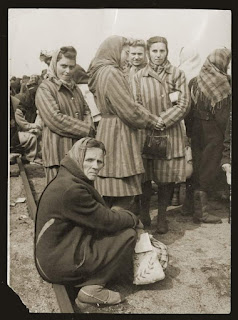“Ravensbrück … was a hell ... We were humiliated at every moment.”
At Ravensbrück concentration camp, Blanka Rothschild was stripped of her clothes, forced to undergo a humiliating examination, and starved to the point that she had fainting spells.
Ravensbrück housed primarily female prisoners from a variety of different categories and nationalities. They included Jews, like Blanka, as well as political prisoners, Jehovah's Witnesses, people identified as asocials and professional criminals, and others.
Blanka was surrounded by prisoners who had lost all humanity, she thought, in order to survive. She saw them physically fight each other for food.
“We started to resemble skeletons,” she remembered.
Blanka was later transported to a forced labor assignment that involved assembling airplanes in a factory in Wittenberg, a subcamp of Sachsenhausen.
The SS began evacuating Ravensbrück in March of 1945 and in late April, forced 20,000 female prisoners on a brutal death march until advancing Soviet forces intersected the route to liberate them. When additional Soviet forces arrived at the camp on April 30, they found that the SS guards had fled and yet more than 2,000 sick men, women, and children remained imprisoned there.
Photo of former Ravensbrück prisoners: USHMM, courtesy of Sigmund Baum











Comments
Post a Comment